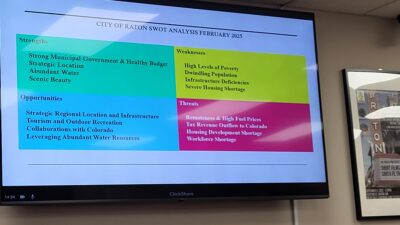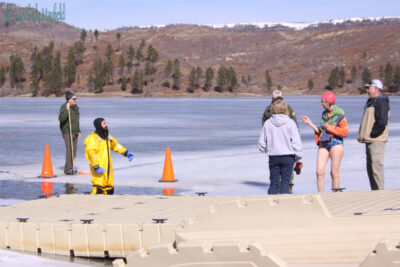by Nancy Christofferson
 Julian Abbot Kebler was one of the four men
Julian Abbot Kebler was one of the four men
credited with establishing the mighty Colorado Fuel and Iron Company with its many subsidiaries.
However, he might be best remembered by his work with the company’s Sociological Department.
Unlike his longtime cohort and boss, John C. Osgood, Kebler did not have a “rags to riches” story. After completing his education in Ohio, he graduated from the Massachusetts Institute of Technology and immediately found work as a surveyor. In 1879, at the age of 21, he took a job with a railroad in Chicago and transferred with that company to Iowa. Two years later he was appointed superintendent of a coal company in Missouri.
In 1881, he became acquainted with Osgood. At the time Kebler was working as superintendent of both a coal mine and its associated rail line. In 1884 he became superintendent of Osgood’s coal company and once Osgood began exploring mining potential in Colorado, Kebler went along. He then took over managing the Denver Fuel Company which managed the Sopris coal mine west of Trinidad.
Osgood, Kebler and their partners in 1886 incorporated the Colorado and Utah Railway.
In 1888, Denver Fuel was consolidated with others to form Colorado Fuel Company under the control of Osgood. Kebler was named second vice president and general manager.
In 1901, Kebler announced the creation of the Sociological Department of the CF&I. This followed a coal miner’s strike and may have been an attempt to offer the miners some relief from their labors and end their complaints. Kebler was named president, assisted by Dr. R.W. Corwin as superintendent.
Kebler took his new job seriously. As Dr. Corwin wrote, “Sociology is not a passing fancy or matter of sentiment. It is a science and a necessity.”
The first programs set up by the new department were kindergartens to educate not just small children but the families of (mostly) European miners, reading rooms, night schools for the men, and recreation.
To provide facilities for these programs, clubhouses were built in the camps. The first in Huerfano and Las Animas counties was at Starkville and called Harmony Hall, built in 1901 and opened in February ‘02. Harmony Hall had “two large rooms, one used for
kindergarten and the other for library, reading room and recreative purposes, besides two smaller rooms, one of which is equipped as a kitchen and the other utilized as a wardrobe [closet],” according to the
CF&I magazine of the time. “By means of a folding far superior to county operated schools. CF&I hired architects to design schools with large, functional rooms that were brightly lit with plenty of windows and electricity, easily cleaned and equipped with fire escapes. One new design for these buildings was the “Osgood School”. This plan, adopted in 1901, was used in some of the larger camps and included a large vestibule, rooms of about 30 by 30 feet to seat 50 students each, high ceilings, two exits, partitions, plenty of ventilation, and a belfry. Both Rouse and Pictou camps had Osgood Schools.
The kindergarten program included education in domestic sciences. Rooms therefore included space and furnishings suitable for sewing, weaving, basketmaking and tatting classes, as well as for musical practice. The products of these handicraft sessions were touted by the company at the World’s Fair in St. Louis in 1904 and several industrial expositions.
The department also published a weekly newsletter or magazine called Camp and Plant. This went to a monthly publication after a few years, but included photos of the camps’ facilities. It also sponsored the annual employee and family picnic each summer and presented Christmas candy and gifts to employee’s children each Christmas.
Kebler may have felt strongly about offering recreation and education to the company camps, but he did not have the opportunity to follow through. By 1902, he had become CF&I president when Osgood stepped down to avert financial disaster. During his first year in charge, the mines and camps at Hezron, Tabasco, Primero and Tercio were opened, and new coke ovens were built in Tabasco, Segundo and Tercio. Primero was the company’s largest mine and produced more than 400,000 tons of coal in its first five months.
Kebler was president for just two years, from August 1901 until August 1903 when he was forced to retire due to failing health. He remained on the board of directors. In his quest for recuperation, he traveled through the east for two months before returning home to his home in Denver, apparently well. However, on Nov. 20, 1903, he suffered a stroke and died at the age of 45.
In his honor the company renamed its mine at
Tioga camp for him in 1919. The mine operated until 1953.





